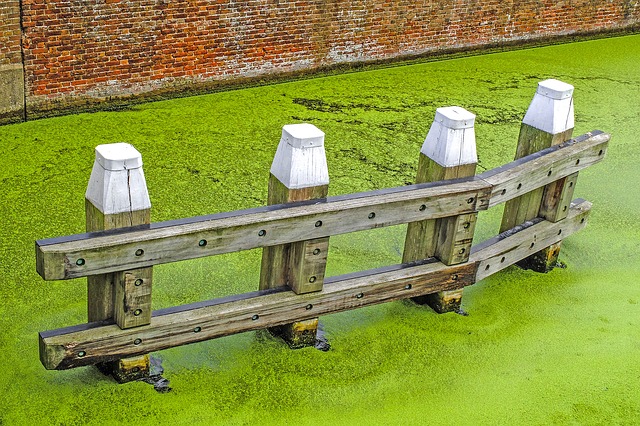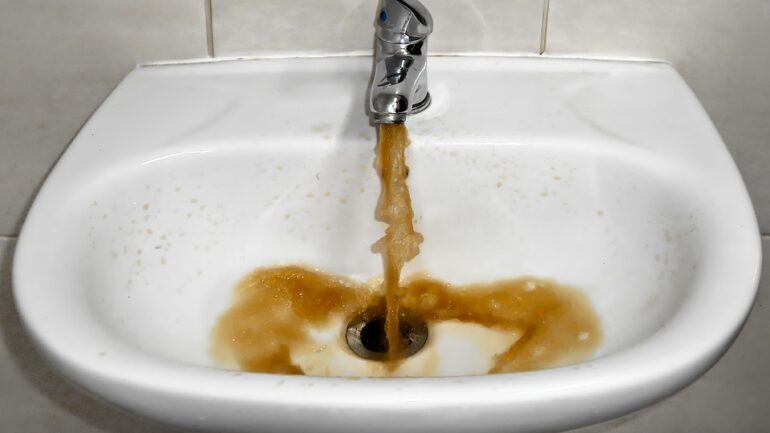By Victor Rivera-Diaz, Researcher and Writer for Save The Waterᵀᴹ | May 14, 2021
Coastal waters around the globe face a seemingly invisible threat—nutrient pollution from groundwater discharge. The problem substances include nitrogen, a nutrient that promotes plant growth and is frequently used in agricultural activities. At elevated levels, nitrogen can lead to sizable algal blooms, marine biodiversity loss, and low oxygen levels. It can also harm human health.
More concerning still, submarine or underwater sources that stem from groundwater make it difficult to keep track of nutrient pollution risks. For this reason, scientists aim to better understand the connection between aquifers, or underground rock layers which hold groundwater, and coastal water quality. In doing so, they hope to inform sound policies and mitigate further risks.
The Invisible Links Between Land and Coast
In a recent study, a team of researchers from thirteen global universities examined the links between groundwater and coastal water quality. They gathered data from over 200 locations around the world. Moreover, they placed special attention on groundwater discharges, or water flowing through aquifers. They found that nitrogen and phosphorus were entering coastal waters via groundwater sources, such as submarine aquifers.
In addition, the research team noted that nutrient pollution levels in underground sources are difficult to monitor as compared to more accessible sources above ground. Therefore, contamination levels of the two substances are able to go undetected as they make their way into the ocean via hidden waterways.
The research team notes that some nutrients from groundwater discharges can both benefit and harm coastal water quality and surrounding ecosystems:
- Benefits: maintains the health of coral reefs, fisheries, as well as phytoplankton, and other primary producers
- Problems: causes low oxygen levels coupled with a decrease in pH, eutrophication or an overabundance of nutrients, and large algal blooms that can prove harmful to large aquatic organisms
“Groundwater is essentially invisible and difficult to investigate. That is why coastal water quality managers often overlook groundwater discharges to the oceans.” These were the observations of Isaac Santos, a professor of marine chemistry at the University of Gothenburg, who spearheaded the study.
A Growing Concern for Coastal Water Quality
The sudden increase in groundwater nitrogen is a relatively recent occurrence. To understand this process, it is important to underscore that many of the world’s lakes and rivers connect to underground aquifers. It is for this reason that land activities can directly, or indirectly, impact watershed health in the form of runoff. In this way, the excess nitrogen eventually ends up deep underground and/or in coastal waters.
Prior to the Industrial Revolution, most of the world’s reactive nitrogen (promotes growth) was naturally occurring. It was made available by way of chemical reactions that involve bacteria and high heat from things such as lightning and volcanoes.
Yet, with the rise of human agricultural activities, the levels of nitrogen in the environment have skyrocketed from pre-industrial conditions. Nutrient pollution has also increased as a result.
In the current age, humans are creating reactive nitrogen in the following three ways:
- Encouraging processes that make nitrogen in the air available for agricultural use, otherwise known as nitrogen fixation
- Producing synthetic nitrogen for fertilizers
- Creating reactive nitrogen through the burning of fossil fuels
As it stands, synthetic nitrogen is by far the most widespread. Invented in 1909 by German chemist Fritz Haber, synthetic nitrogen heavily contributed to the green (agricultural) revolution. It now makes up 80% of the nitrogen in the bodily proteins of the average human.
Unintended Consequences Amid the Growth
The unmoderated use of this growth-promoting substance is quite literally choking the oceans by causing widespread hypoxia, or lack of oxygen. It also harms marine life. In this changing landscape, human health researchers argue that while the benefits of nitrogen for food production have been immense, their overuse is likely a public health concern. Specifically, excess levels in air and water can lead to respiratory and heart problems, as well as cancer.
The Current Situation for Nutrient Pollution:
Currently, nitrogen is influencing river systems around the world. Researchers have assessed the Labrador and Hudson Bay regions, where human influence is minimal and natural nitrogen processes that occur in the background are moderate.
In contrast, waterways in the Republic of Korea contain 17 times more nitrogen than what would occur naturally. The North Sea contains 15 times more nitrogen. In the northeastern United States, from the Chesapeake Bay to Maine, levels are 10 times higher.
The Gulf of Mexico
In the Gulf of Mexico, researchers looked into nitrogen levels and their effects. In a surprise finding, the coastal region’s hypoxic zone, or area with low levels of oxygen, was the largest ever recorded.
To decrease eutrophication in the Gulf of Mexico, nitrogen from land sources would need to be reduced by about 60%. Yet, even at 100% efficiency for agricultural nitrogen use, it would still take many years to reach target levels.
In addition, the researchers pointed to the remaining nitrogen accumulated over the years. For the Mississippi River Basin, in particular, these levels of the substance will continue to affect coastal water quality in the region. Thus, the short-term use of nitrogen has long-term effects in the form of nutrient pollution.
Solutions:
Now in the early years of the United Nations Decade of Ocean Science, the issue of coastal water quality is garnering more critical attention. To reduce nutrient pollution, experts have proposed various solutions, some of which are currently underway:
- New technologies: researchers are developing new methods to accurately “measure nitrogen in coastal surface waters” and remove nitrogen in groundwater
- Governance: the United States Environmental Protection Agency (USEPA) is providing resources and grants. This includes regulatory and outreach programs, as well as partnerships and opportunities for research and development
- Agricultural practices: we need to see significant changes in agricultural management practices over a long-term horizon
Do Your Part:
If you would like to learn more about nutrient pollution or get involved in a coastal community near you, check out the following links:
In brief, safeguarding our oceans from nutrient pollution will require joint efforts by those of us on land. After all, our coastal waters much like the air we breathe, both need sufficient oxygen.





